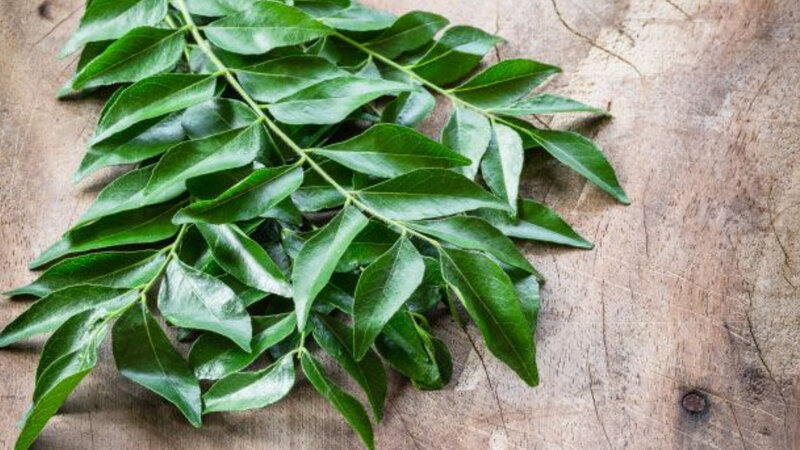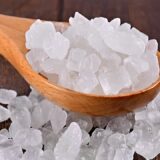What Are Curry Leaves? How To Use Curry Leaves In Cooking?
Herbal products and natural folk medicine have been used for centuries for food, remedies, and beauty purposes in all cultures around the world. Their slogan was “Let the food be your medicine and let medicine be your food”. Modern scientists and medical professionals have shown keen interest in this field as they recognize the true health benefits of these remedies. Many herbal plants and trees are the most important sources of remedy and curry leaves are among these.
Modern scientists and medical professionals have shown keen interest in this field as they recognize the true health benefits of these remedies. Many herbal plants and trees are the most important sources of remedy and curry leaves are among these.
History Of Curry Leaves
The curry leaf tree (Murraya koenigii) is native to India, Bangladesh, Sri Lanka, and the Andaman Islands. The word “curry” originates from the Tamil word “Kari” which means spicy sauces and then the alternative name “kari-pattha” came in trend means curry leaf.
The use of curry leaves as a flavoring agent has a very long history it was described in Tamil literature in the early first to the fourth centuries AD. A couple of centuries later it was also found in Kannada literature which mentioned the Use Curry Leaves In Cooking for a flavoring agent.
Curry leaf trees are found in dense forests and wastelands around the Indian subcontinent except in the higher parts of the Himalayas. From east Chittagong (Bangladesh) to Assam (India) and extends west to Ravi River (Pakistan).
Later the plants spread to Malaysia, South Africa, and meeting with immigrants from southern Asia. Today curry leaves are grown in India, Southeast Asia, Sri Lanka, Australia, the Pacific Islands, and Africa as a food flavoring.
Various Names Of Curry Leaf in India
- Gujarathi- Mitho limado
- Kannada- Karibevu
- Hindi- Karipatta, Mitha nim
- Tamil- Kariveppilai
- Malayalam- Kariveppu
- Marathi- Kadhilimb
- Sanskrit- Girinimba
- Telugu- Karepeku
- Tulu- Bevusoppu
Various Names Of Curry Leaf Around the World
- English- Curry leaves
- Portuguese- Folhas de caril
- Russian- Listya karri
- Spanish- Hojas de curry
- Italian- Fogli di Cari
- French- Feuilles de Cari
- German- Curryblatter
How to use curry leaves in Indian cooking?
Curry leaf comes from the plant known as (Murraya koenigii) is an important leafy vegetable that is widely used in Indian cookery for flavoring foodstuffs.
The leaves have a slightly spicy pungent, bitter, and slightly acidic flavor, and retain their flavor and other qualities, even after drying.
Curry leaves are used in many Indian recipes and are also used as a remedy for health and beauty in Ayurveda and Unani. However, curry leaves can be used in various forms such as fresh, dried, powdered, and cooked nowadays it is also available in canned.
1. Fresh Curry Leaves
Most of the cook prefers fresh curry leaves for various food recipes due to its aromatic flavor. Curry leaves are highly aromatic when fresh, its leaves are small and appear like shiny lemon leaves with a distinct aromatic taste.
Before using ensure that leaves are fresh free from any cuts, spots, or blemishes, clean wash the curry leaves before use. They do not have a long shelf life but if kept in an airtight plastic bag or newspaper and then stored in the refrigerator without detaching the leaves from the stem, they may remain fresh for one week to two months. Fresh curry leaves are found, generally in the frozen food section of stores.
2. Dried Curry Leaves
Whether you use fresh curry leaves or dried curry leaves both are flavorful and fragrant, producing irresistible dishes. It is a flexible herb that can be used with either fresh, dried, or powdered. Dried curry leaves are less pungent than fresh so if using dried curry leaves the quantity must be double.
Generally, dried curry leaves are air-dried or oven-dried to produce longer shelf life. Dried curry leaves are used in some recipes that call for baking or roasting fresh curry leaves before the leaves are added as flavoring. The dried leaves are easily availed in the commercial market.
3. Curry Leaves Powdered
Curry leaves powder is used in various recipes that require curry leaves to be used in powder form. In some recipes, curry leaves powder is also called curry powder.
Curry leaves powder must not be confused with the curry powder available in the market. Curry powder is a commercial powder that is generally a mixture of many spices along with dried curry leaves.
While curry leaf powder is a powdered version of the actual drying curries leaf so it is important that you read labels of spice for accuracy prior to purchase.
Curry leaves powder is also available in the market it is packed in dust form after drying; curry leaves. It can be sprinkled on the food to get the best aroma flavor.
4. Cooked Curry Leaves
Some recipes require fresh curry leaves to be cooked before being added as flavoring. In such circumstances sauteed or fried curry leaves are prepared by the cook/ chef prior to or during the cooking process.
Such sauteed or fried curry leaves can not be purchased from the market as it has to be made at home before cooking. Instead, curry leaves must be purchased fresh, or perhaps dried, then cook in the kitchen.
How To Grow Curry Leaves Plant At Home?
Growing curry leaves in your kitchen garden is a good idea as you can enjoy cooking with pesticide-free fresh leaves. It is an outdoor plant that needs sunlight.
If you are living in an apartment you can also grow in a pot where you can provide direct sunlight to the plant. It is also important to protect it from very high temperatures during hot summer months as its leaves may dry and so plant.
Curry leaves tree is a small spreading shrub that grows about 2.5 meters in height. The main stem looks dark green to brownish, it has numerous dots on it. The leaves are 30 cm long each bearing about 9-24 leaflets.
When the bark is peeled off for use the white wood can be seen underneath. Its flowering starts from the middle of April and ends till the middle of May. The peak flowering season can be observed to be the last week of April.
The fruiting can be observed from the middle of July to the end of August and may continue from to last week of July to the 1st week of August. It grows well in temperature around 65°C or slightly above.
How To Grow Curry Leaf?
- Curry leaves plant can easily be grown from the ripe seeds it needs about 20°C to germinate. Growing curry leaves tree from seeds may take a little longer time to grow and it needs special care.
- The other way is Stem cuttings it is the easiest way to plant a curry leaf plant. Take some semi-ripe cuttings from curry tree shrubs to remember it must not be very hard and woody. After cutting the stem at the node, insert the stem a few centimeters down into the ground or you can also put it into the pot with some leaves above the surface.
How To Take Care Of Curry Leaves Tree?
- It is very important that you trim your curry leaf plant so that it grows fast and thick growth. By trimming the plant it will provide an ample supply of fresh and young leaves. If trimming of the plant is not done, it will outgrow at any space easily.
- Generally, pests are not required in curry leaf plants, since the leaves are constantly being removed from use. But if required better go for natural instead of using chemical pesticides. The best way to take care of plants is to sprinkle saltwater on the leaves once in two weeks.
- Curry leaf plant requires well-drained soil to flourish well, so, it is recommended to allow the soil to dry a bit in between each watering session. Proper care must be taken during summer when the soil gets dried up easily.
- Bio-fertilizers are recommended for the curry leaf plant. The regular application of natural fertilizers is more important for plants that can be cultivated in pots.
A study was published in “Plant Foods for Human Nutrition” in 2009 where various Indian leafy vegetables were compared for their antioxidant activity. Interestingly it was found that total antioxidant activity and free radical scavenging activity were highest in curry leaves.
So including curry leaves in your diet is perhaps a good idea to be healthy it can be used both raw and cooked. Typically, in Indian cooking, a whole bunch of curry leaves is tempered with ghee or oil. It combines well with vegetables, lentils, fish, meats, curds, butter, and coconut milk, and of course, it can also be used as in curries.
It has been found that the extract of curry leaves contains healthy antioxidants, its root, the bark is useful in some conditions as a pain reliever, its leaves can help against high cholesterol and high blood sugar.

























